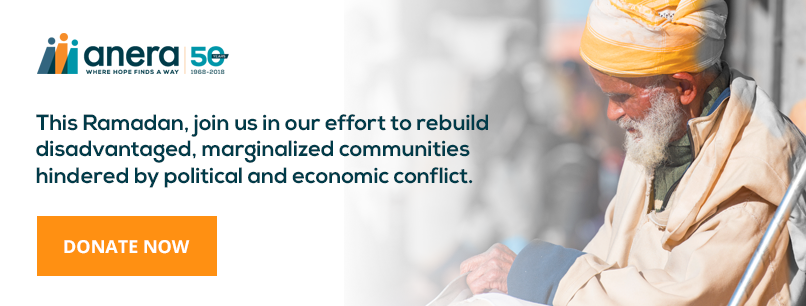Ramadan 2022
Posted in: Society & culture
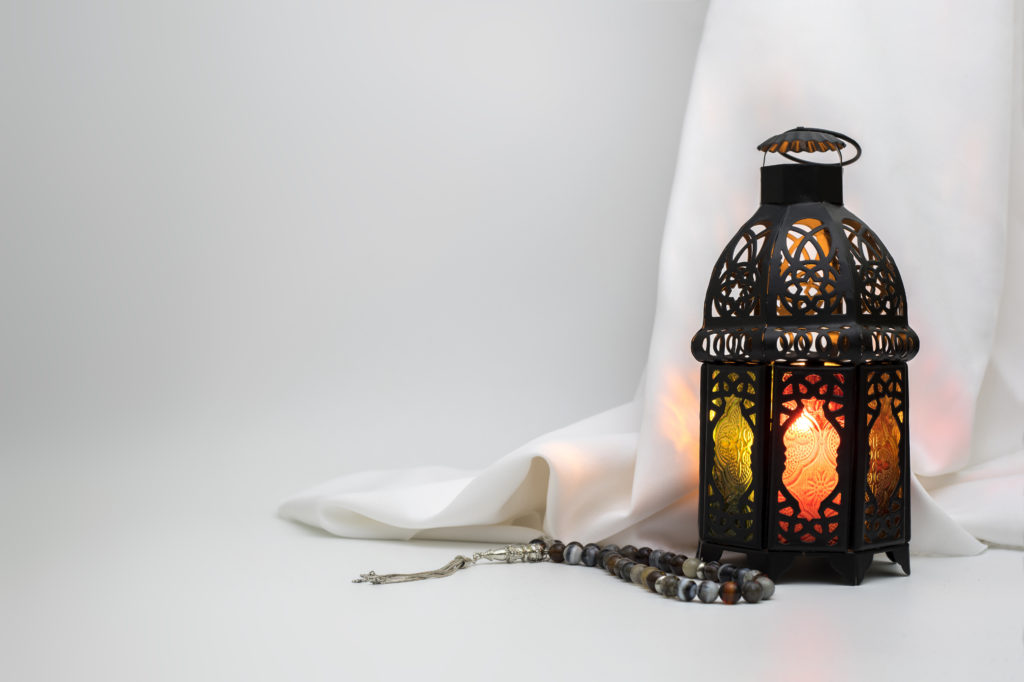

Every year on the ninth month of the Islamic lunar cycle, there’s a subtle stirring of anticipation as millions of Muslims around the world prepare to fast, feast and celebrate their beliefs during the holiest month on the Muslim calendar.
It’s observed in more than 50 Muslim-majority countries and numerous other nations across the globe. It’s celebrated in the Middle East and North Africa, in the Asia-Pacific region and East Asia, in Sub-Saharan Africa and Europe and right here in America. It’s called Ramadan, and it’s a crucial part of life for at least 24 percent of the world’s population.
From sunrise to sundown each day of this sacred time, 1.8 billion people in every corner of the globe will forego food, drink and worldly indulgences in favor of a deep reflection of their fragile humanity. While Muslims use Ramadan to contemplate their connection to God, engage in extra prayer, and perform increased acts of generosity and charity, they also spend this spiritually-charged time reconnecting with their families and celebrating life.
Your friends, neighbors, community members and fellow humans observe this Muslim holy time every year, but how much do you really know about Ramadan and what it means to its people? From Ramadan traditions and recipes to Ramadan dates this year, here’s everything you need to know about this holy month and those who celebrate it.
When Is Ramadan 2022?
The holy month of Ramadan begins every year at the start of the ninth lunar month on the Muslim calendar. Because an Islamic year is 354 or 355 days, Ramadan will shift slightly backward each year, beginning 10 or 11 days earlier.
The date Ramadan starts depends on the appearance and sighting of the new moon, so it will also vary slightly year to year. Last year, for example, Ramadan took place from April 12 to May 12. In 2022, it should last approximately from the evening of Monday, April 2 to the evening of Wednesday, May 2. Each Ramadan lasts 30 days.
After Ramadan 2022 comes to a close at sundown on May 2, Muslim families will celebrate Eid Al Fitr — the festival of breaking the fast. This celebration lasts up to three days and always occurs directly after Ramadan. Last year, Eid Al Fitr began on May 12. In 2022, it should start on Wednesday, May 2 — although it will technically begin as soon as fasting ends on the previous night.

What Is Ramadan?
Ramadan Kareem or Ramadan Mubarak — either greeting expresses good wishes at the start of this sacred time. Every year at the sighting of a new moon on the ninth lunar month, the 30 days of Ramadan begin, and with them, a host of Ramadan traditions, including “sawm” — the practice of fasting from sunrise to sunset, which is one of Islam’s five pillars. Why? Ramadan is a sacred time of prayer, charity and contemplation marking the time during which Allah is said to have spoken the first verses of the Quran — or Islam’s holy text — to the Prophet Mohammed on Laylat al-Qadr, or “The Night of Power.” Now, it’s a month when “the gates of Heaven are open and the gates of Hell are closed and the devils are chained.”
To observe this holiness and show dedication to Allah and the word of Islam, Muslims use Ramadan to become more closely in touch with their spirituality, deepen their sense of humility, become closer to God and renew their religious selfhood through a series of spiritual and physical practices that last approximately 30 days and 30 nights — or as long as Ramadan continues on any given year. The most prominent Ramadan tradition is fasting, but the month also entails an increased focus on dedicated prayer as well as charitable efforts and initiatives. Muslims also make efforts to discourage any negative emotions, complaining, gossiping or swearing during Ramadan — all concentration should be on prayer, humility and positivity.
While there are special allowances for children and the elderly as well as Muslims who are pregnant, nursing, traveling or ill, fasting is a practice all Muslims must partake in each Ramadan to fulfill one of their sacred pillars of Islam. There are five pillars total — fasting, charity, prayer, testimony of faith and a pilgrimage to Mecca. The holy practice of sawm serves to reinforce religious values in a variety of ways. Not only does it provide Muslims with a renewed compassion for the poor by showing what daily hunger and thirst feel like, but it also reminds them of their frailty as humble humans and their dependence on Allah for sustenance while removing external distractions to let them focus on their faith.
Fasting isn’t just about abstaining from food. During Ramadan daylight hours, Muslims avoid eating, drinking liquids, taking medication, chewing gum and engaging in sexual activity of any kind — some even choose to refrain from their favorite pastimes like watching television or listening to music in order to make more time to focus on prayer. Each day during this holy time, Muslim men, women and children awaken well before dawn and eat a large meal — or “suhoor” — packed with protein and plenty of fluids to carry them through daylight hours until their next meal after dark, then they perform their morning prayer and prepare for the day.
While some businesses or schools in Muslim-majority countries may reduce their operating hours during the month of Ramadan, Muslims continue to go about their regular lives, jobs and activities while fasting. When the day is over and the evening call to prayer signals the end of the fast, families and friends celebrate with an “iftar” or light meal before performing their evening prayer at home or in the mosque and coming together again for a larger meal later. This routine continues each day as Muslims around the globe observe Ramadan’s meaning.
How Long Is Ramadan?
Because Islam follows a lunar calendar for religious purposes, Ramadan’s dates shift each year. In the Muslim lunar calendar, each year has 354 days — 11 fewer than the standard year of the Gregorian calendar. Ramadan begins on the ninth month when the crescent after the new moon can be seen in the sky, which is subject to change — this natural factor is why the exact start date of Ramadan can only be determined very close to the start date itself. Similarly, Ramadan ends when the crescent moon is seen again, signaling the beginning of the tenth month. This year, the Ramadan dates fall from April 2 to May 2. Like Ramadan 2021, each Ramadan lasts approximately 30 days.
Because each year in the Muslim lunar calendar is 11 days shorter than the standard year, Ramadan does not always occur in the same season — in fact, it moves backward 11 days every year and affects the way Muslims experience Ramadan accordingly. When Ramadan occurs in the winter, daylight hours are brief, meaning fasting becomes a less trying task. When Ramadan dates fall in the summer months, however, the days are much longer, and fasting can be more difficult both as a result of length and heat. Regardless, Muslims all over the world will fast according to religious rules for the entirety of Ramadan.
What Is Eid and When Are Eid Al Fitr and Eid Al Adha?
Ramadan is the most sacred, important time in the practice of Islam, but the religion also includes two holidays or eids — Eid Al Fitr and Eid Al Adha. Eid Al Adha occurs about 70 days after Ramadan ends and is known as “the festival of sacrifice.” Marking the end of the Hajj — the yearly Muslim pilgrimage to Mecca and one of Islam’s five pillars — Eid Al Adha involves traditional slaughter, the meat from which is divided between family, friends and the less fortunate.
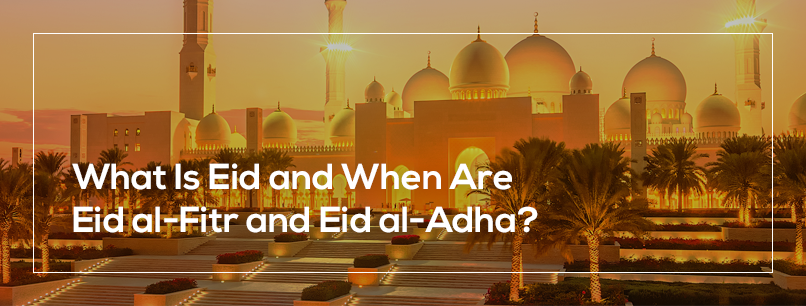
Eid Al Fitr — or “the festival of breaking the fast” — marks the end of Ramadan itself and occurs directly after Ramadan ends. A festive, cheerful time, Eid Al Fitr is a joyous three-day celebration when families, friends and Muslim communities come together to rejoice in their Ramadan experience and each other. During this eid, Muslims dress in festive new eid clothing, visit friends’ and family’s houses, exchange gifts with loved ones, visit the poor to give charity and partake in large daytime feasts. Eid Al Fitr is one of the happiest and most significant times in the Islamic year.
Like Ramadan, Eid Al Fitr begins with the sighting of the “hilal” — or crescent moon — after the new moon, this time marking the tenth month of the Muslim calendar. For Ramadan 2021, it fell on May 12 or 13. To mark the eid’s beginning, Muslims will awaken early in the morning to perform their pre-dawn prayer, prepare for the day, eat breakfast and come together to perform occasion-specific congregational prayers called Salaat Al Eid. Throughout the remainder of the three-day festival, Muslims will perform “Zakat Al Fitr” — or charitable contributions — as well as adorning their houses with lights and decorations to delight company while exchanging gifts and enjoying large meals together. Eid mubarak — have a blessed eid!
Ramadan Recipes
During both Ramadan and Eid Al Fitr, Muslims partake in traditional celebratory or preparatory meals both before daylight breaks and when it comes time to break the fast. Muslims across the Levant often break their fast first with a rejuvenating drink — qamar al-din (apricot juice) being the classic beverage of choice. In Palestine, kharoub (carob juice) is also popular; and tamer hindi (tamarind juice) is another favorite in Lebanon and Jordan.
Like any other religious holiday or celebratory time, Ramadan and eid are synonymous with certain traditional Muslim meals. Here are a few of the most beloved Ramadan recipes for suhoor, iftar and feasts during Eid Al Fitr:
- Qatayef: A sweet or savory meal made from a miniature pancake-like pastry filled with delicious ingredients and dipped in a thick syrup, Qatayef is a traditional favorite during Ramadan. This dumpling-like dish can be filled with nuts, cream, cheese or other, more modern assortments of ingredients — depending on the family preparing them and the country in which they’re made. The pastry is cooked on one side, folded and filled with a mixture of nuts, raisins, cheese and seasonings before being stir-fried and served with syrup or honey. This delicious dish can be served during both breakfast and dessert in a variety of forms.
- Knafeh: Another pastry-like dish popular to Ramadan, Knafeh is a scrumptious cheese pastry soaked in syrup. Made in many variants, the dessert can be served in a dough form, with noodles or as a crust. Heated in palm oil or butter, the pastry is spread with or rolled in a soft white cheese, topped with additional pastry and covered in thick, aromatic syrup or honey, then sprinkled with pistachios for a tempting treat during iftar.
- Roasting Kebab: A staple of Ramadan and Middle Eastern cuisine, roasting kebabs are popular for both suhoor and iftar as a way of filling up and taking in plenty of protein before and after the day’s fast. Roasted vegetables and meats skewered on sticks are a popular treat to enjoy with rice for a hearty meal, and kebabs can consist of a wide variety of ingredients, including chicken, lamb and other meats prepared with spices and roasted with vegetables, served on a stick for easy, hands-on eating.
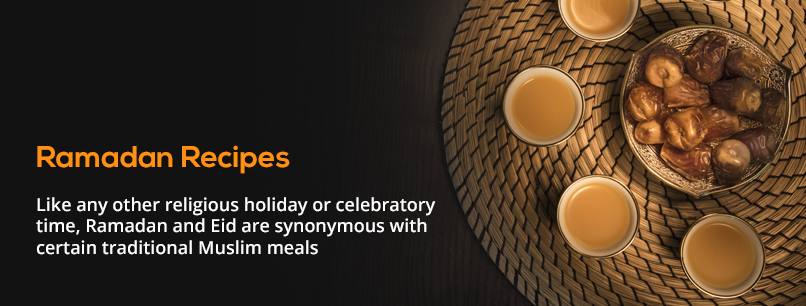
Ramadan 2022 in Palestine
While Ramadan is a time of holiness, charity, contemplation and spirituality meant to be spent with family in festivity, goodwill, prayer and celebration, the 2014 bombings of Gaza conflict still casts a shadow over many people in Palestine, making it difficult to observe Ramadan traditionally. Conflict, rising food prices, movement restrictions and lack of resources make life a daily struggle for refugees and vulnerable families in Gaza, the West Bank and Lebanon.
With a damaged economy and a multitude of industrial sanctions, unemployment in Gaza has reached a rate of 43 percent, and it remains extremely high in the rest of Palestine, affecting agriculture, fishing, construction and other industries people rely on for their livelihoods. Because food is increasingly more expensive and access to nutritious choices is extremely limited, most people need to spend half of their small incomes on food — still, 1.6 million people in Palestine don’t have enough to eat and they have trouble affording other essentials like medicine and education.
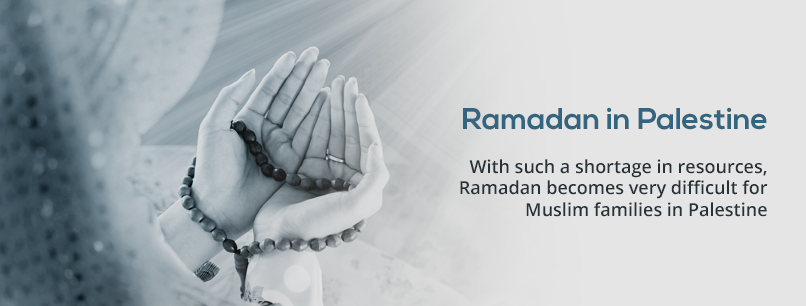
With such a shortage in resources, Ramadan becomes very difficult for Muslim families in Palestine — planning nutritious suhoor and iftar meals is a challenge when there isn’t enough food, and large, celebratory family gatherings and feasts to share with the community are almost unthinkable. Economic difficulties also make it impossible for families to exchange gifts or purchase new clothing for Eid Al Fitr, let alone give anything to charity when they are already struggling.
Responding With Ramadan Food Packages
Muslim people everywhere deserve the ability to dedicate themselves to Ramadan and enjoy tradition as their religion requires, and people in Palestine are no exception. In response to the difficulties Muslims are experiencing in Palestinian areas across the Gaza Strip, Lebanon and the West Bank, charitable organizations are working hard with the help of donors to provide Ramadan food packages and other resources to people who desperately need them for the month of Ramadan and the rest of the year.
Peace, prosperity and the freedom to celebrate Ramadan are essential to Palestinian people, and by offering a donation of any size to humanitarian efforts, you can provide a vulnerable family with the food and joy they need this Ramadan.
Give With Anera
As a non-profit, non-political, non-religious charitable group dedicated to easing suffering and addressing developmental and humanitarian needs in Palestine and Lebanon, Anera has been helping Palestinian refugees and people in the Middle East for 50 years. By providing essential resources like food and water and working to develop education, medicine and other needs in struggling areas, we work to rebuild communities and provide people with the tools they deserve to live dignified, self-sufficient lives in the midst of conflict.
This Ramadan, join us in our effort to rebuild disadvantaged, marginalized communities hindered by political and economic conflict. Your help will fund our efforts to provide personalized community attention to people in need — with a staff living and working in the Middle East, we effect change and rebuild the lives of our neighbors and fellow humans in the communities we cherish. Make a donation today to change the life of a family forever.
OUR BLOG
Related
Part of a series on the impact of the war on all sectors of economic life within Gaza, Anera’s immediate response and plans for the future. Other posts cover housing, education, WASH, health and food production systems. Livelihood Recovery In Gaza, 57 years of occupation and…
InterAction and 50 Member CEOs, some of whom have organizations that work in Gaza, urge President Biden to take decisive and actionable steps to alleviate the humanitarian crisis in Gaza. Detailed within this letter are specific steps and commitments that…

